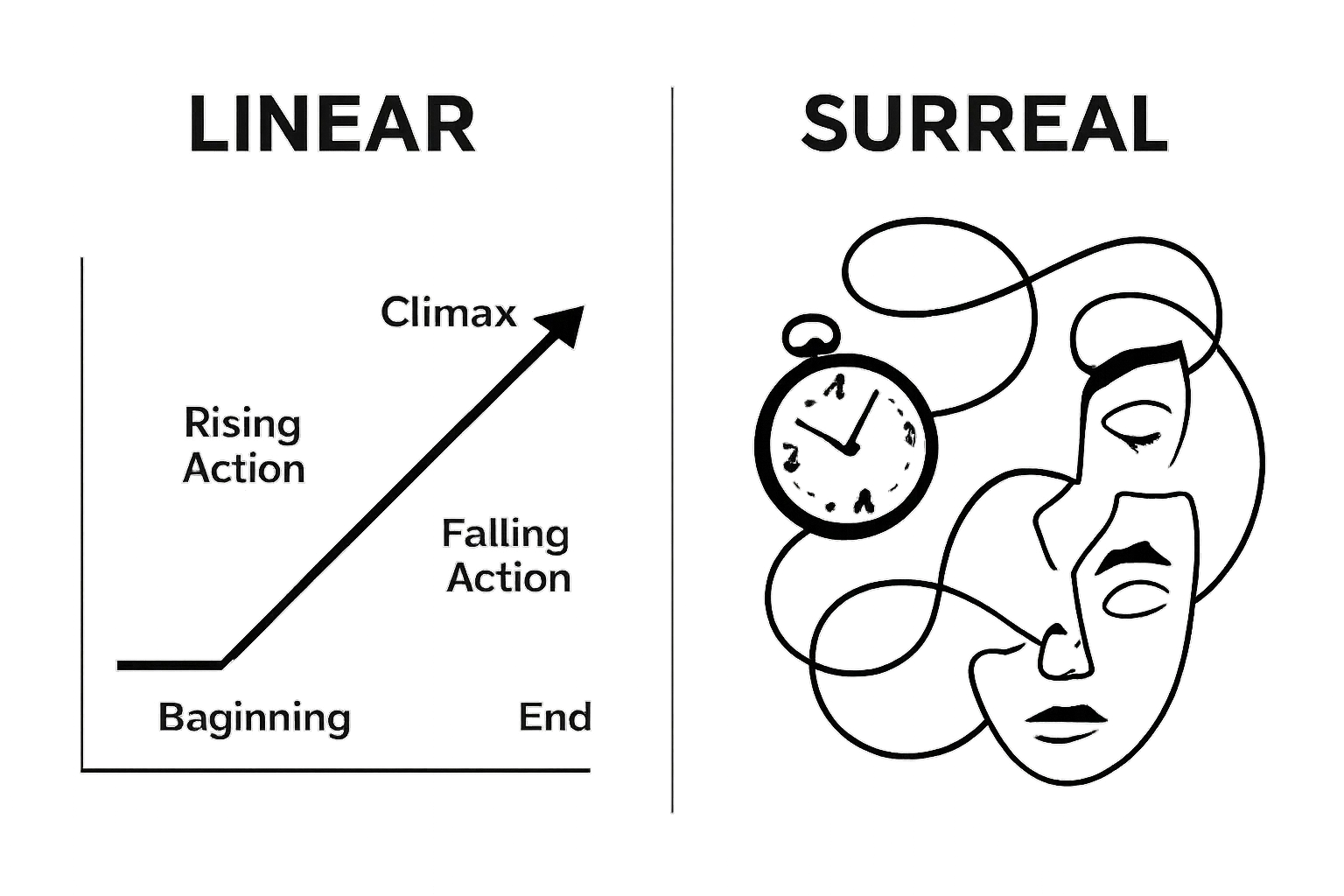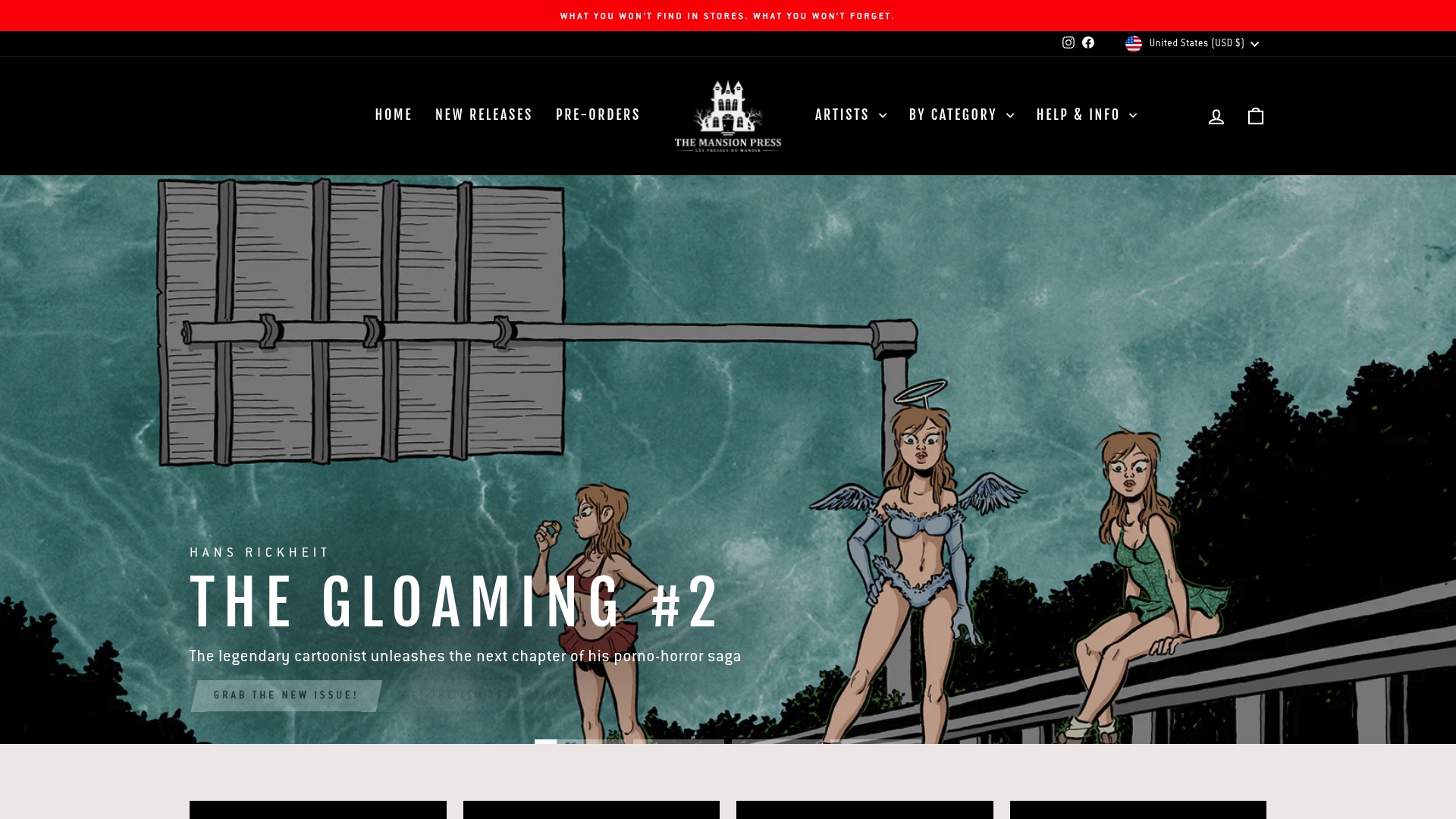Understanding Surrealism in Graphic Novels: A Deep Dive
Surrealism shook the art world when it challenged everything people thought about creativity and reality. This movement began in the early 1920s and went on to inspire graphic novel artists to break away from ordinary storytelling rules. Most art movements stick to one medium or idea, hoping to nudge the boundaries. Surrealism, on the other hand, exploded into art and literature with the goal of letting pure imagination run wild and unfiltered, rewriting what people expect from visual stories.
Table of Contents
- Defining Surrealism And Its Essence In Art
- The Historical Context Of Surrealism In Graphic Novels
- Key Themes And Symbols In Surrealism
- Influential Artists And Their Works In Surrealism
- The Impact Of Surrealism On Storytelling Techniques
Quick Summary
| Takeaway | Explanation |
|---|---|
| Surrealism transcends traditional artistic boundaries. | This artistic movement explores imagination and unconscious thought, redefining how art is perceived. |
| Reject logical constraints for creative expression. | Surrealist artists emphasize subconscious imagination, allowing creativity to flourish beyond rational limits. |
| Graphic novels showcase surrealism’s thematic depth. | This medium uses dreamy and fragmented storytelling to explore complex emotional and psychological landscapes. |
| Symbolism reveals internal psychological states. | Surrealist symbols create visual metaphors to express subconscious experiences and challenge perceptions of reality. |
| Narrative deconstruction enhances storytelling complexity. | Surrealism promotes non-linear narratives, encouraging immersive experiences that reflect the fluidity of human thought. |
Defining Surrealism and Its Essence in Art
Surrealism emerges as a profound artistic movement that transcends traditional artistic boundaries, exploring the landscape of imagination and unconscious thought. Originated in the early 1920s, this revolutionary art form challenged conventional representation by diving deep into the human psyche’s mysterious realms.
The Philosophical Foundations
At its core, surrealism represents more than an aesthetic style. It is a radical approach to understanding human perception and creativity. Artists like Salvador Dali and René Magritte sought to liberate the mind from rational constraints, believing that true artistic expression emerges from the unfiltered regions of subconscious imagination.
Key philosophical principles of surrealism include:
- Rejection of logical thinking as the primary mode of understanding reality
- Celebration of dreams, hallucinations, and spontaneous mental processes
- Challenging societal norms through unexpected visual juxtapositions
Visual Language of the Unconscious
Surrealist art communicates through symbolic and often bizarre imagery that defies traditional narrative logic. By merging unexpected elements, artists create visual landscapes that provoke emotional and psychological responses. A melting clock draped over a barren landscape or a human figure with fragmented body parts becomes a powerful metaphor for internal psychological states.
This artistic approach transforms graphic novels into potent vehicles for exploring complex emotional and philosophical concepts. Surrealism in graphic novels allows creators to break free from linear storytelling, presenting narratives that mirror the nonlinear nature of human thought and experience.
The movement fundamentally reimagines art not as a representation of external reality, but as a window into the rich, often unexplored territories of human consciousness.
The Historical Context of Surrealism in Graphic Novels
Graphic novels emerged as a sophisticated medium that perfectly complemented surrealism’s radical artistic vision. The intersection of surrealist art and graphic storytelling represents a fascinating evolution of visual narrative techniques that challenged traditional storytelling methods.
Avant Garde Roots and Artistic Rebellion
The roots of surrealist graphic novels trace back to early 20th century experimental art movements. Artists and writers sought to dismantle conventional narrative structures, viewing graphic storytelling as a revolutionary platform for exploring subconscious experiences. European artists like André Breton, who wrote the Surrealist Manifesto, played a crucial role in establishing intellectual foundations that would later influence graphic novel creators.
Key historical developments included:
- Rejection of linear narrative structures
- Embracing psychological complexity over plot progression
- Utilizing visual metaphors as primary storytelling mechanisms
Graphic Novel Pioneers
Early graphic novel creators recognized surrealism as a powerful tool for expressing complex emotional and psychological landscapes. Artists like David Mazzucchelli in “Asterios Polyp” and Dave McKean in “Arkham Asylum” demonstrated how surrealist techniques could transform sequential art from mere storytelling into profound philosophical exploration.
These pioneering works transformed graphic novels from simple entertainment into nuanced artistic expressions. By incorporating dream logic, symbolic imagery, and non linear storytelling, they expanded the medium’s potential for profound narrative complexity.
The historical trajectory of surrealism in graphic novels represents a continuous dialogue between artistic imagination and narrative innovation, pushing the boundaries of visual storytelling beyond traditional constraints.
Key Themes and Symbols in Surrealism
Surrealism operates as a complex visual language where symbols and themes transcend literal representation, creating rich metaphorical landscapes that explore the depths of human consciousness. Recurring motifs in surrealist art reveal profound psychological landscapes that challenge viewers’ perceptions of reality and imagination.
Psychological Symbolism
Symbols in surrealist graphic novels function as powerful conduits for expressing unconscious experiences. Fragmentary human figures, distorted body parts, and impossible anatomical configurations become visual metaphors for internal psychological states. A disembodied eye might represent hidden perceptions, while melting or metamorphosing objects suggest the fluid nature of human memory and emotional experience.
Central symbolic representations include:
- Dreamlike imagery that challenges rational perception
- Transformation of familiar objects into strange, unsettling forms
- Juxtaposition of seemingly unrelated elements to provoke emotional responses
Thematic Explorations
Surrealism consistently interrogates fundamental human experiences through themes that probe the boundaries between reality and imagination. Time becomes a malleable construct, with clocks bending or fragmenting to represent the subjective nature of human perception. Spatial relationships dissolve, creating landscapes where gravity seems optional and physical laws become mere suggestions.
Graphic novel creators leverage these thematic approaches to construct narratives that mirror the complex, non linear nature of human consciousness. By rejecting traditional storytelling methods, they invite readers to experience narrative as a fluid, multilayered exploration of inner psychological terrain.
The profound genius of surrealist symbolism lies in its ability to transform the familiar into the extraordinary, inviting viewers to question their fundamental understanding of perception and reality.
The table below summarizes major surrealist symbols found in graphic novels and the psychological meanings they convey to support storytelling and thematic depth.
| Symbolic Element | Visual Description | Psychological or Narrative Meaning |
|---|---|---|
| Fragmented human figures | Disjointed or distorted body parts | Represents fractured identity and unconscious psychological states |
| Melting clocks/objects | Objects appearing to dissolve or warp | Symbolizes fluidity of time, memory, and perception |
| Juxtaposed unrelated elements | Familiar items presented in illogical ways | Provokes emotional response, challenging rational perception |
| Disembodied eyes | Floating or isolated eyes | Suggests hidden perceptions and alternate ways of seeing |
| Shifting landscapes | Unreal, gravity-defying environments | Reflects the fluid boundaries between reality and imagination |

Influential Artists and Their Works in Surrealism
Surrealism emerged as a revolutionary artistic movement through the groundbreaking works of visionary creators who challenged conventional artistic representation. Pioneering artists transformed visual storytelling by exploring the intricate landscapes of human consciousness and imagination.
European Pioneers
Salvador Dalí stands as a quintessential surrealist, renowned for his extraordinary ability to render dreamlike landscapes with meticulous precision. His iconic painting “The Persistence of Memory” features melting clocks draped across a barren landscape, symbolizing the fluid and subjective nature of human perception. René Magritte similarly challenged reality through paradoxical imagery, creating works that juxtaposed ordinary objects in extraordinary contexts, inviting viewers to question their fundamental understanding of visual representation.
Key characteristics of European surrealist artists include:
- Rejection of rational, linear thinking
- Exploration of unconscious psychological landscapes
- Creating visual narratives that defy conventional logic
Graphic Novel Innovators
In the realm of graphic novels, artists like Dave McKean and David Mazzucchelli expanded surrealist principles into sequential art. McKean’s work in “Arkham Asylum” demonstrates how surrealist techniques can transform narrative storytelling, using fragmented imagery and symbolic representations to explore psychological complexity. These artists view graphic novels not merely as entertainment, but as sophisticated platforms for psychological and philosophical exploration.
By seamlessly integrating surrealist techniques into graphic storytelling, these innovators transformed the medium from simple sequential art into profound vehicles for exploring human consciousness, challenging readers to perceive reality through a more nuanced, imaginative lens.
To clarify the distinct approaches taken by European surrealist artists and graphic novel innovators, the following table compares their defining characteristics and contributions to surrealism.
| Approach | Notable Figures | Defining Characteristics | Contribution to Surrealism in Graphic Novels |
|---|---|---|---|
| European Surrealists | Salvador Dali, René Magritte | Rejected rational, linear thinking; explored unconscious psychological landscapes; created paradoxical, symbolic imagery | Provided philosophical and visual inspiration for later graphic narratives |
| Graphic Novel Innovators | Dave McKean, David Mazzucchelli | Integrated surrealist techniques into sequential art; used symbolic, fragmented imagery; focused on psychological and philosophical exploration | Expanded the artistic and narrative possibilities of graphic novels |
The Impact of Surrealism on Storytelling Techniques
Surrealism fundamentally revolutionized narrative structures, introducing radical approaches to storytelling that challenged traditional linear progression. Contemporary storytelling techniques continue to bear the profound influence of surrealist principles by reimagining how stories can be constructed and experienced.
Narrative Deconstruction
Traditional storytelling relies on chronological sequences and logical cause-and-effect relationships. Surrealist approaches deliberately dismantle these conventions, presenting narratives that mirror the fragmented, non linear nature of human consciousness. Artists and writers began treating narrative as a fluid landscape where time, memory, and perception intersect unpredictably.

Key narrative transformation techniques include:
- Abandoning strict chronological storytelling
- Embracing dream logic and associative thinking
- Prioritizing emotional and psychological experiences over plot progression
Psychological Narrative Exploration
Surrealist storytelling techniques transform graphic novels into profound psychological investigations. Instead of presenting events sequentially, creators began constructing narratives that reflect internal mental states. Characters become vessels for exploring subconscious desires, fears, and unresolved emotional experiences.
This approach allows graphic novelists to represent complex psychological experiences that traditional narrative structures cannot capture. By fragmenting linear storytelling, artists create immersive experiences that invite readers to engage with narratives on deeper, more intuitive levels.
The legacy of surrealism in storytelling represents a radical reimagining of narrative potential, challenging audiences to embrace complexity, ambiguity, and the mysterious landscapes of human experience.
Experience Surrealism Beyond the Page: Own the Art That Inspires Your Imagination
Understanding the raw power of surrealism in graphic novels opens your mind to new forms of storytelling and visual language. If you feel inspired by the symbolic depth, dreamlike imagery, and boundary-pushing creativity described in the article, you might find yourself searching for unique ways to bring these visions into your own life. Often, the challenge is finding authentic artbooks, rare comics, and original artworks that capture this surreal essence—especially pieces that are not available in mainstream stores.

Elevate your personal collection or discover exclusive works you can only get through The Mansion Press. Browse limited-edition artbooks, surrealist graphic novels, and curated collector’s items directly from the creators and independent artists shaping today’s avant-garde scene. Don’t wait; many items are released in small runs or as pre-orders and sell out quickly. Visit The Mansion Press homepage today to claim your piece of surrealist art and experience the extraordinary world of imagination firsthand.
Frequently Asked Questions
What is surrealism in graphic novels?
Surrealism in graphic novels is an artistic movement that incorporates dreamlike imagery, bizarre juxtapositions, and elements that challenge rational thought to explore the depths of human consciousness and emotion.
How did surrealism influence storytelling techniques in graphic novels?
Surrealism revolutionized storytelling in graphic novels by introducing non-linear narratives, dream logic, and a focus on psychological exploration, allowing creators to portray complex emotional and mental landscapes more effectively.
Who are some influential artists associated with surrealism in graphic novels?
Pioneering artists in the genre include Dave McKean and David Mazzucchelli, who utilized surrealist techniques in their works to transform graphic storytelling into profound philosophical explorations.
What are common themes and symbols found in surrealist graphic novels?
Common themes include the exploration of dreams and subconscious experiences, with symbols like fragmented bodies, distorted objects, and surprising juxtapositions that invite readers to question reality and perception.

